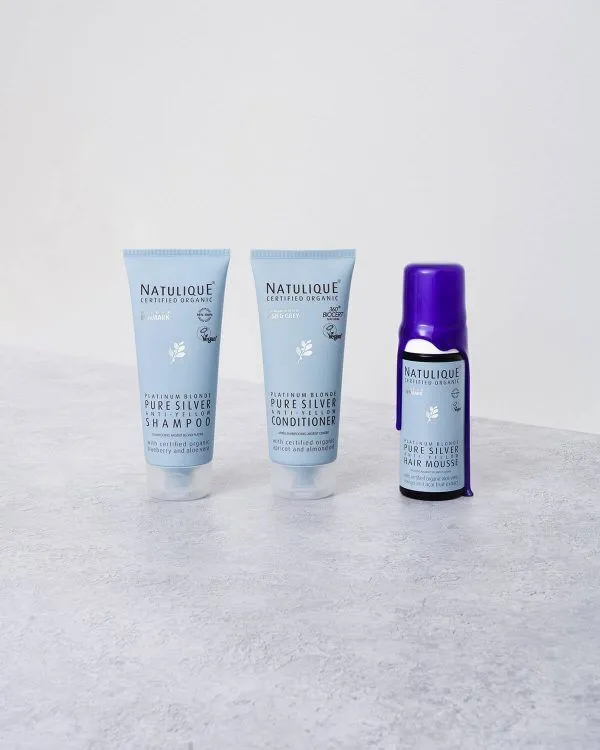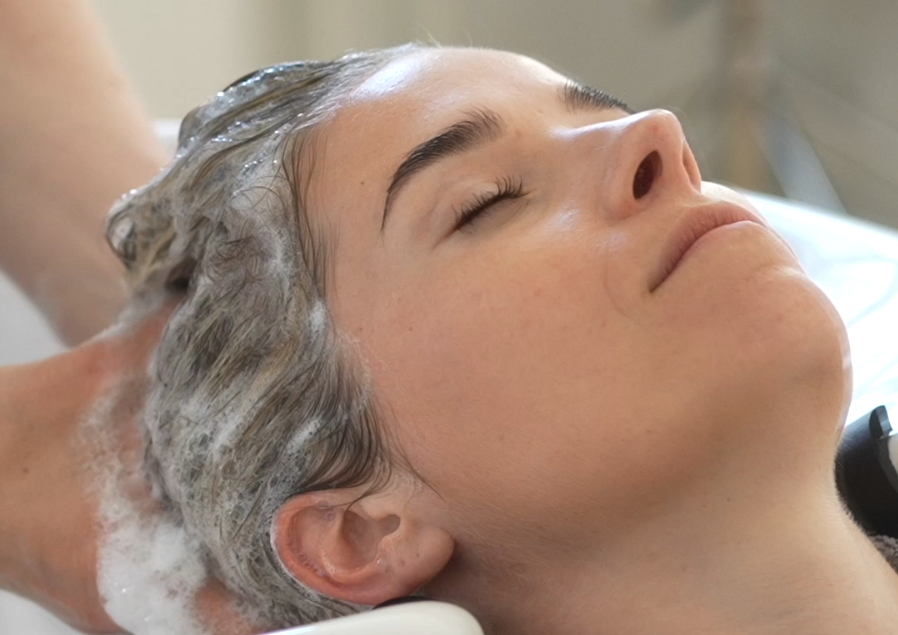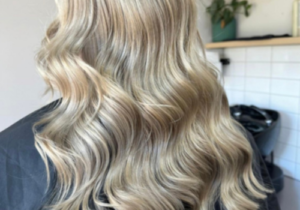If you've been considering giving up hair color, you're not alone. More and more people are choosing to forgo hair coloring in favor of a more natural approach. In this article, we'll explore why stopping hair coloring can be beneficial and how you can make this transition smoothly.
Understanding the reasons for discontinuing hair coloring
The disadvantages of repeated coloring
Potential damage to hair
Frequent coloring can cause considerable damage to hair. The chemicals in hair colorants, such as ammonia and peroxide, can weaken hair structure, leaving it dry, brittle and prone to split ends. Over time, this cumulative damage can make hair difficult to style and maintain.
Impact on health
It's also important to consider possible health impacts. Hair colorants often contain chemicals that can be absorbed by the scalp and enter the body. Some research suggests that these chemicals may be linked to health problems such as allergies, or even increased risk of certain diseases. While further studies are needed to clarify these risks, taking precautions remains wise.
Natural trends in hair beauty
The beauty of grey
One of the main reasons to stop coloring your hair is to embrace the natural beauty of your gray hair. Far from being a sign of old age, gray hair is increasingly seen as a style statement. Many celebrities and influencers proudly show off their gray hair, helping to redefine beauty standards. Embracing your natural hair can be a powerful way of celebrating your authenticity and boosting your self-confidence.
Natural, colorant-free hair
In addition to gray hair, showing hair in its natural state is gaining in popularity. Many consumers are becoming increasingly aware of the ingredients in the products they consume and apply to their bodies. So choosing not to use hair colorants is perfectly in line with this trend towards a more natural, healthier lifestyle. What's more, dye-free hair often allows us to better judge our true state of health, which can facilitate the adoption of more appropriate care routines.

Stopping the transition to natural hair color
Transition stages
Patience is the key
A transition to natural hair color requires, above all, a good dose of patience. Letting your roots grow back without dyeing them can take time, depending on the length of your hair and the speed of its growth. During this period, it's essential to stay motivated and remind yourself of the reasons why you chose this approach. Every centimetre of regrowth represents a step towards healthier, more authentic hair. For some people, this can take anywhere from a few months to over a year, depending on the desired length and the frequency of haircuts to eliminate dyed areas.
Dealing with the inevitable "dividing line
One of the most notable challenges when stopping coloring is managing the "demarcation line" - the place where new, natural roots appear alongside dyed hair. This demarcation can sometimes be described in unflattering terms, and it's legitimate to want to conceal it. To lessen this visual effect, you can opt for regular, strategic haircuts that gradually eliminate the colored areas. Styling techniques, such as curls or voluminous textures, can also help camouflage this line of demarcation by making the color difference less obvious.
Temporary alternatives to ease the transition
Use of temporary colored hair products
While you're waiting for your natural hair to grow back, you can use temporary colored hair products to harmonize different shades. These products include hair sprays, powders and mascaras designed to blend with your natural color. They can be particularly effective for special occasions or for quick touch-ups before a night out. The major advantage of these temporary products is that they wash out with the next wash, allowing you to maintain your commitment to a more natural look without the drawbacks of permanent coloring.
Choosing strategic hairstyles
Strategic hairstyles can also play a crucial role in managing the transition. Protective hairstyles such as braids, chignons or ponytails not only reduce the appearance of the hairline, but also protect your hair from external aggressors. Experimenting with accessories like headbands, scarves or hats can also add a touch of style while hiding roots in full regrowth. By using these tips, you can turn the transition phase into a fun and creative time, where you explore new ways of styling your hair.
Supporting healthy hair during transition
Appropriate hair care
Maintaining a hair care routine is essential for the health of your hair during this transition period. Adopt conditioning hair treatments that hydrate and strengthen your hair. Using sulfate- and paraben-free products can help minimize damage. Also consider incorporating nourishing hair masks once a week to revitalize your hair. Natural oils such as coconut, argan or jojoba oil can be particularly beneficial in restoring shine and strength.
Healthy habits for hair
In addition to hair products, certain habits can help keep your hair healthy. Avoid heating appliances such as hair dryers and straightening irons whenever possible, as they can weaken hair structure. Opt for natural hairstyles and let your hair air-dry whenever you can. In addition, a balanced diet rich in essential vitamins and minerals such as biotin, zinc and vitamins A and E plays a key role in hair health. Drinking enough water every day also helps to keep hair hydrated from the inside out.
See also: How do I apply an anti-hair loss shampoo?
Supporting healthy hair during transition
Appropriate hair care
Revitalizing hair treatments
Conditioning hair treatments are essential to maintain the health of your hair during the transition. These treatments help repair damage caused by previous colorings and strengthen the hair structure. Moisturizing and nourishing masks should be used once a week. Ingredients such as coconut oil, avocado oil and shea butter are particularly beneficial. These components penetrate deep into the hair fiber, providing intense hydration and helping to restore hair's natural shine.
Healthy habits for hair
Adopting good hair care habits is just as important as the treatments themselves. Avoid washing your hair too frequently, as this can strip the scalp of its natural oils, essential for protecting and moisturizing the hair. Opt for gentle, sulfate-free shampoos that cleanse without aggressing the scalp. When drying, gently dab your hair with a towel rather than rubbing vigorously. In addition, try to limit the use of heated appliances; prefer air-drying and let your hair take its natural shape as much as possible.
Dietary and lifestyle factors
Eat a nutrient-rich diet
Nutrition plays a crucial role in hair health. A balanced diet rich in vitamins and minerals can significantly improve the structure and appearance of your hair. For example, biotin, iron, zinc and vitamins A, C and E are essential for hair growth and strength. Include foods rich in these nutrients in your daily diet, such as green vegetables, fruit, nuts, seeds and oily fish. Protein is also fundamental to hair growth, so make sure you consume sufficient sources of protein such as meat, eggs and legumes.
Adopt a balanced lifestyle
A healthy lifestyle goes beyond diet. Managing stress is important, as excessive stress can lead to hair loss and weaken hair follicles. Incorporating stress management techniques such as meditation, yoga or regular exercise can have considerable benefits for hair health. What's more, getting enough sleep is crucial for cell regeneration, including that of hair cells. Try to get at least 7 to 8 hours of sleep a night to give your body time to repair and revitalize itself.
Environmental impacts on hair
Protection against external aggression
Environmental factors play a significant role in the health of your hair. Excessive exposure to sun, wind, pollution and chlorinated water can cause significant damage. To protect your hair, wear a hat or use UV protection spray when outdoors. Rinse your hair after swimming to remove chlorine, and apply specific products to protect your hair from atmospheric pollutants. These small precautions can make a big difference to the health of your hair over time.
Using natural products to protect hair
Opting for natural hair products can also help minimize damage caused by harsh chemicals. Look for products enriched with essential oils, plant extracts and other ingredients of natural origin. For example, aloe vera is often used to soothe the scalp and moisturize hair. Similarly, essential oils such as lavender, rosemary and tea tree oil can help maintain a healthy scalp, promote hair growth and prevent breakage.
- Coconut oil: Ideal for nourishing and protecting the hair fiber.
- Aloe vera: Moisturizes and soothes the scalp

Dietary and lifestyle factors
Eat a nutrient-rich diet
The importance of nutrition
Nutrition plays a crucial role in hair health. A balanced diet rich in vitamins and minerals can significantly improve the structure and appearance of your hair. For example, biotin, iron, zinc and vitamins A, C and E are essential for hair growth and strength. Include foods rich in these nutrients in your daily diet, such as green vegetables, fruit, nuts, seeds and oily fish. Protein is also fundamental to hair growth, so make sure you consume sufficient sources of protein such as meat, eggs and legumes.
Tips for a healthy diet
To support the transition to your natural hair, we recommend a varied, nutrient-rich diet. Here are a few tips:
- Incorporate green leafy vegetables like spinach and kale into your meals, as they are rich in iron and vitamin C.
- Add nuts and seeds like almonds and chia seeds to boost your intake of biotin and zinc.
- Eat oily fish such as salmon and mackerel to benefit from omega-3 fatty acids, which promote scalp health.
- Use healthy oils like olive oil and coconut oil for cooking, as they contain fatty acids beneficial to hair structure.
Adopt a balanced lifestyle
Stress management
A healthy lifestyle goes beyond diet. Managing stress is important, as excessive stress can lead to hair loss and weaken hair follicles. Incorporating stress management techniques such as meditation, yoga or regular exercise can have considerable benefits for hair health. What's more, getting enough sleep is crucial for cell regeneration, including that of hair cells. Try to get at least 7 to 8 hours of sleep a night to give your body time to repair and revitalize itself.
Adopting good habits
Adopting good hair care habits is just as important as the treatments themselves. Avoid washing your hair too frequently, as this can strip the scalp of its natural oils, essential for protecting and moisturizing the hair. Opt for gentle, sulfate-free shampoos that cleanse without aggressing the scalp. When drying, gently dab your hair with a towel rather than rubbing vigorously. In addition, try to limit the use of heated appliances; prefer air-drying and let your hair take its natural shape as much as possible.
Environmental impacts on hair
Protection against external aggression
Environmental factors play a significant role in the health of your hair. Excessive exposure to sun, wind, pollution and chlorinated water can cause significant damage. To protect your hair, wear a hat or use UV protection spray when outdoors. Rinse your hair after swimming to remove chlorine, and apply specific products to protect your hair from atmospheric pollutants. These small precautions can make a big difference to the health of your hair over time.
Using natural products to protect hair
Opting for natural hair products can also help minimize damage caused by harsh chemicals. Look for products enriched with essential oils, plant extracts and other ingredients of natural origin. For example, aloe vera is often used to soothe the scalp and moisturize hair. Likewise, essential oils such as lavender, rosemary and tea tree oil can help maintain a healthy scalp, promote hair growth and prevent breakage.</i





